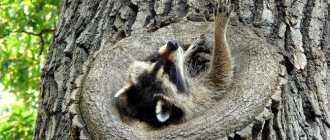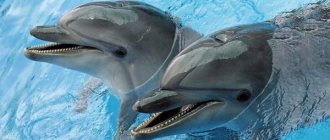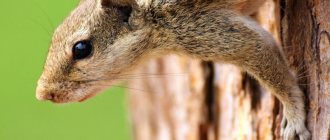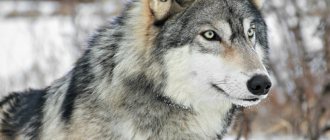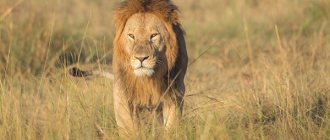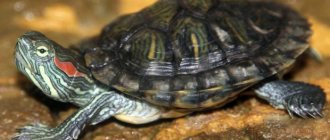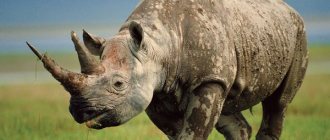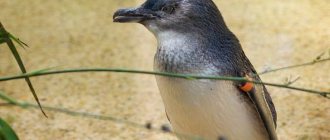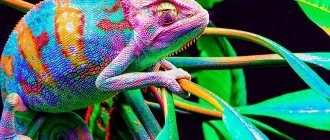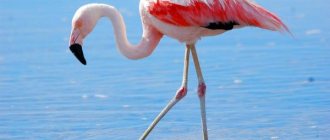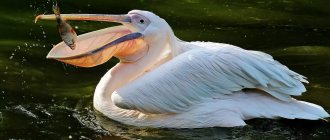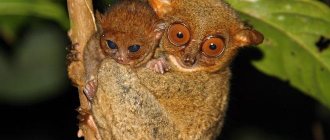How to draw a bear step by step
The bear is one of the most dangerous forest predators. There are some distinctive features in their body structure. with any other animal :
- large and stocky body structure;
- large chest, strong paws with claws;
- dense, tough skin.
The most impressive part of the body is the chest. The shoulder blades on the back are clearly visible. Limbs are depicted based on three points: wrist, shoulder, elbow. Knowing the basic nuances of the anatomy of a predator, you can easily depict it on paper.
The physiques of different breeds of this animal differ from each other.
For example, polar bears have a rounded eye opening, a sagging belly, and an elongated and narrow muzzle. In the drawing of representatives of the brown breed, the withers are depicted as more powerful. The head has a large forehead and chin. If you look at pandas, they have a large head, round ears and curvy shape. Himalayan bears resemble brown bears, only their bodies are slightly slimmer.
Now, having studied the main features of the structure, you can begin to work. Step-by-step instructions will help with this.
White beauties
The polar bear is perhaps the most photogenic animal on earth, although we are well aware of the risks photographers take to capture amazing photos of these predators.
How to draw an ordinary bear with a pencil
1 step. Sketch out the outline of his torso, head and paws. Although the bear’s paws are not large, you need to try to make them look strong and sturdy. We draw ears on the top of the head. Use a thin horizontal strip to mark the location of the eyes.
Step 2. Let's move on to the eyes and fur. Draw two small eyes on the prepared markings. They should be symmetrical and the same size. From them we draw a line of the nose, at its end there is a triangular tip of the nose. Add a mouth with a short stroke. Now it is important to remove all unnecessary lines so that they do not interfere when drawing the animal’s fur. We use jerky strokes to depict it on the head, hind legs, and stomach. Between the front paws, on the chest, we make a woolen “collar”.
Step 3. The main work is over. It remains to give the beast more volume. Let's make it even more fluffy. To do this correctly, you can look at the photo of a real forest dweller.
Step 4 The final stage will be painting the eyes and nose. Make the nostrils darker. Outline the entire outline again to give clear boundaries where they are needed.
Photos and descriptions of modern bear species
Now let’s take a closer look at each of the eight species of bears.
Brown bear
The brown bear or common bear (Ursus arctos) is a typical representative of the bear family; found in Russia, Canada and Alaska. It prefers to settle in old forest areas, avoids wide open spaces, but can live at an altitude of up to 5000 meters above sea level, where there are no longer forests. Habitats are usually confined to freshwater bodies of water.
The brown bear is a large animal: its body length is 1.5-2.8 m, its height at the shoulders is up to 1.5 m. Males weigh from 60 to 800 kg. The weight of adult predators varies depending on the time of year and geographic habitat. The smallest is the pika from the mountains of Central Asia, and the largest is the Kodiak from Alaska and Kamchatka.
The photo shows a brown bear in all its glory.
Drawing a Teddy bear
It’s not just realistic bears that are popular among art lovers. Characters from various cartoons have won the love of not only children, but also adults. One of these is the Teddy bear. It can be found in every soft toy store. Children love them.
How to draw a cute plush and please your child? The process sequence is similar to the previous lesson. Here you just need to add distinctive details and give it a recognizable look.
- Draw two auxiliary circles for the head and torso. Legs and arms need to be slightly extended. We give a smooth shape to the silhouette.
- On the head we draw small ears, button eyes, a mouth, and a nose. The bear is sitting, so we draw clear feet. One hand will be hidden behind your back, and the other will be placed on your stomach.
- Draw the fur with small strokes. We make a patch on the chest and half of the forehead, as if it had been darned.
- You can color the teddy bear and add, if desired, a bouquet of flowers or a card.
Bear breeding
The bear is a monogamous predator, although the duration of existence of a bear family is very short. The pair is only together during the breeding season. After mating, the male leaves the female.
Pregnancy lasts about six months, after which one to three puppies are born. The cubs are born defenseless and feed on the mother's milk for two years. They begin independent life at the age of three or four years.
Winnie the Pooh
The main character of the Soviet cartoon was loved not only by children, but also by adults. His life is filled with many interesting adventures. Each new episode with him evokes a feeling of sincere joy and indescribable emotions for children. “There’s sawdust in my head! No problem!" - Now everyone sang this excerpt from the bear cub’s song. But what if you draw a honey lover yourself?
The process is quite simple, but it is better to follow the step-by-step instructions. And so, let's get started!
- We start the image with the body and muzzle. The head is a large circle with straight sides. Corners should not be sharply rounded. We add a semicircular body to it. We make a smooth transition to create a silhouette of a bear.
- On the top of the head we draw ears. Add semi-oval front legs. They seem to be folded on the stomach. We draw claws and two paws below. On the face we display the nose, a small smile, and the eyebrows of the teddy bear. You need to show Winnie the Pooh's surprised eyes.
- All that remains is to color the picture. For this you will need colored crayons. A brown shade is suitable for the entire body and head. For paws, ears and muzzle - dark brown. We shade the nose with black. The drawing is finished! You can enjoy your creation.
- All that remains is to color the picture. For this you will need colored crayons. A brown shade is suitable for the entire body and head. For paws, ears and muzzle - dark brown. We shade the nose with black. The drawing is finished! You can enjoy your creation.
Bears on the canvases of Russian artists
We continue to admire and be inspired by the paintings of famous artists who captured bears. This time we are looking at paintings by Russian artists.
The most famous painting depicting bears, perhaps, can be considered “Morning in a Pine Forest.” This painting was painted in 1889 by Ivan Shishkin and Konstantin Savitsky. For a long time, only Shishkin was named as the author of the picture, even to this day this information is widespread. All because the collector Pavel Tretyakov erased Savitsky’s signature. Justice has triumphed, and at the moment, the fact that the painting belongs to the brushes of both artists is a reliable fact.
One of the most famous Russian artists, Vasily Ivanovich Surikov, also painted paintings with the participation of bears. Among them is “Tsar Mikhail Fedorovich’s Bear Hunt” (1898).
And also “The Great Masquerade in 1722 on the streets of Moscow with the participation of Peter I and Prince Caesar I.F. Romodanovsky" (1900).
A famous author of hunting scenes is Nikolai Egorovich Sverchkov (1817-1898). In 1885 he painted the painting "Bear Hunt".
Klavdiy Vasilyevich Lebedev (1852-1916) painted the painting “A Bear’s Hand in the Forest,” also dedicated to hunting.
Evgeniy Aleksandrovich Tikhmenev (1869-1934) - a Russian painter, graphic artist, and animal painter, who was especially successful in hunting scenes - painted the painting “Bear Hunting with a Horn.”
The author of many religious paintings, Mikhail Vasilyevich Nesterov (1862-1942), captured in his painting “The Youth of St. Sergius” the story of the taming of a bear by St. Sergius of Radonezh.
One day the Venerable Sergius of Radonezh saw a large bear in front of his hut. Frightened at the first moment, the Reverend realized that the beast was not so much fierce as hungry. Then he brought out a crust of bread and placed it on a stump in front of the bear. After eating the treat, the bear retreated into the forest. But from then on, the beast began to often come to the dwelling of St. Sergius, waiting for the prescribed treat. And the Reverend thanked God for sending him a fierce beast for consolation. The monk fell in love with his forest friend and began to share the last piece with him, and sometimes he gave his entire lunch to the beast, as if he did not understand fasting. The wild beast obeyed the Reverend and was meek with him, like a sheep.
Nicholas Konstantinovich Roerich (1874-1947) in his painting “And We Will Not Fear” calls for fiery courage. And wild animals can become helpers, as happened with the bear that approached the monks.
Count Vladimir Leonidovich Muravyov (1861-1940) was a romantic. Perhaps he is the only Russian artist who managed to poeticize hunting and attract the attention of the general public to it. Ants and bears were not ignored. What is curious is that in a whole series of paintings by Muravyov called “Hunting Painting” there is no hunting, only the peaceful life of animals in their natural environment.
Alexander Alekseevich Borisov (1866-1934) - explorer of the polar lands and the first painter of the Arctic. What would the Arctic be without a polar bear? In 1899, Borisov captured a polar bear in his painting “Moonlit Night. Bear on the hunt."
Vasily Alekseevich Vatagin (1883-1969) is a famous Russian animal artist, sculptor, and zoologist. Being a zoologist, Vatagin was always extremely accurate, but at the same time he also took care that the animal’s appearance fit organically into the surrounding environment. The artist wrote about this: “A successfully found compositional and colorful relationship of an animal to the landscape is one of the conditions for animal painting. If these relationships are violated in one direction or another, the picture can be a “landscape with a figure” or approach a zoological illustration.” V.A. Vatagin did an excellent job of depicting animals in nature; his animals live in his paintings - raising offspring, hunting, relaxing. The artist devoted his whole life to them. Of course, Vatagin could not ignore bears in his paintings.
Flerov Konstantin Konstantinovich (1904-1980) - reconstruction artist and animal painter, recreated the appearance of many fossil animals, and was widely cited in illustrations of paleontological topics in the second half of the 20th century. Among Flerov’s works is an image of a cave bear.
A self-taught Russian artist of Georgian origin, a representative of primitivism, Niko Pirosmani (1862-1918), repeatedly depicted bears, and this artist had his own vision of them.
Russian artists undoubtedly made a huge contribution to world art, including in terms of depicting bears.
I hope you found it interesting 
How foreign artists depicted bears can be seen here>>
Thank you for your attention!
Your Elena Sidorova.
Be-be-bear Kesha
Among modern cartoons, “Be-be-bears” are actively becoming popular. Every kid will want to add one of the characters to their art collection. Below is a master class: “how to easily draw Kesha”?
It is worth preparing a helium pen and markers.
- Draw an oval for the muzzle. It should have slightly square features, with ears on top.
- In the middle of the hero’s head we draw another small oval. This is the future nose.
- Draw the eyes. You need to show highlights on them. We paint over everything around except them.
- Let's move on to the body. We draw two lines from the head. They should widen slightly towards the bottom. Next, we connect them with a horizontal sausage.
- We draw the upper paws and claws.
- We draw the blouse, tummy and two legs of the character. On the jacket you can depict a picture in the form of a mesh.
- All that remains is to color everything. Kesha himself will be brown. The nose, mouth, inner parts of the ears, bottom of the paws and claws are dark brown. We make the sweater blue. Your child will definitely appreciate the work.
Each drawing can be made unique, just add your own twist to it. Bears can be drawn in motion, when they lie, raise their paws, whatever you like. In creativity, it is not necessary to be a certified specialist; what is important here is the ability to grasp the necessary detail and grasp the meaning.
The desire to discover and learn something new. Few people can boast of a perfect rendering of the drawing the first time. This is why a master class and various step-by-step instructions have been created. You need, as they say, to get better at it. All comes with experience. This also applies to art.
Connection of times
But in 2014 in Sochi, a bear also became one of the Olympic mascots, only this time it was white. This is natural, because the Olympics were winter.
And the connection of times was also manifested in the fact that many cried in 2014, just like in 80, when the bear closed the games.
This completes our list of these most beautiful animals on our planet. But we leave it to our readers to decide for themselves which of the animals presented gets the right to be called the most beautiful bear.
The editors of TopCafe ask you to write in the comments which beautiful photos of bears made the greatest impression on you.
Features of the American Grizzly
A very interesting feature of this species is that it is willing to spend most of its life sleeping. They dig a hole that will hide them well.
They prepare for hibernation itself in October-November. They are ready to wake up only in March-April. They will be in a very deep sleep, but either great danger or a sharp feeling of hunger can awaken them.
The only exception to hibernation is hungry bears. They can fall asleep, but because of hunger they simply wake up earlier. These will always be very aggressive and can even attack a person.
When they usually prefer to be in privacy and out of sight of a person.
